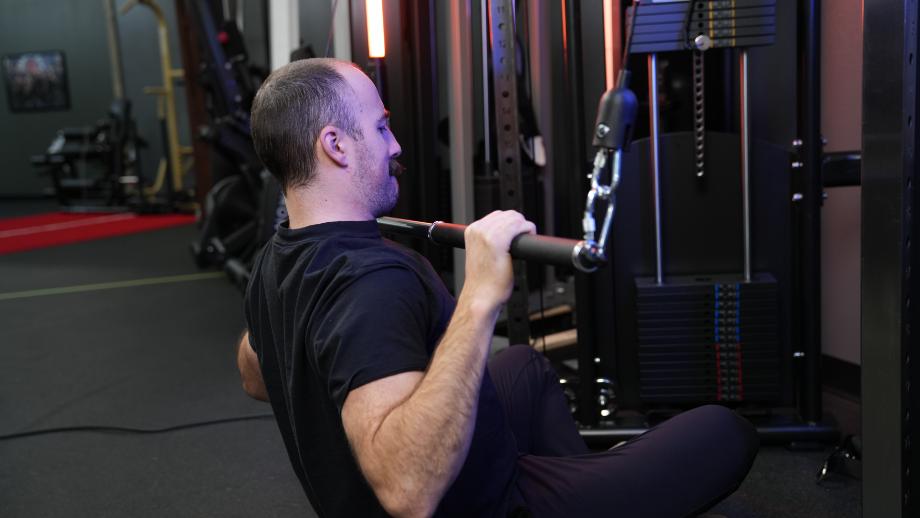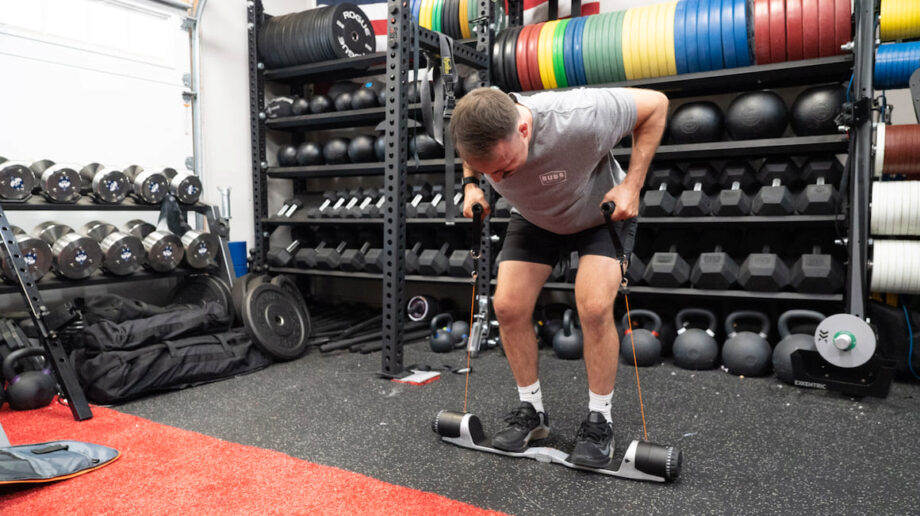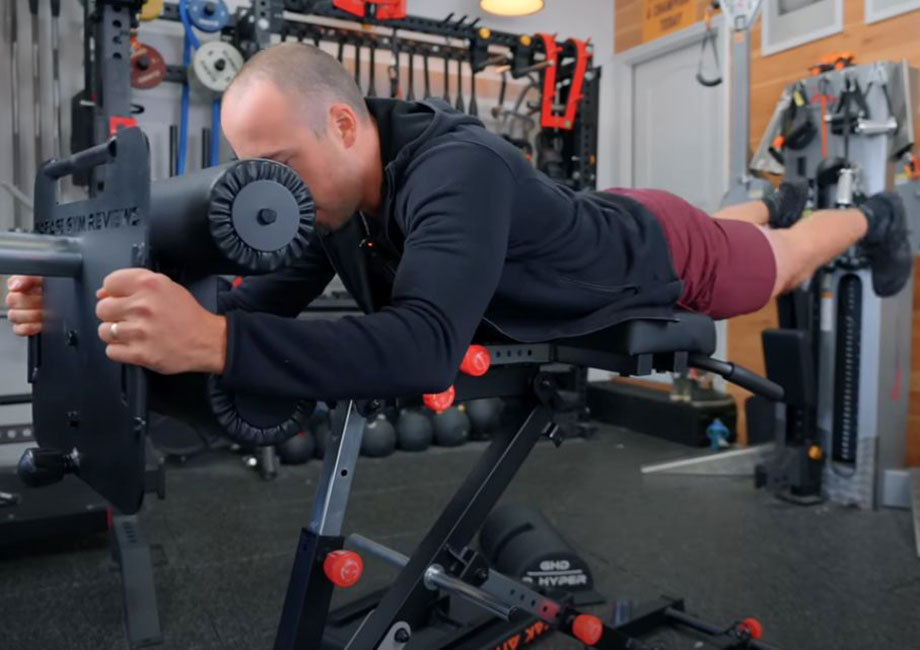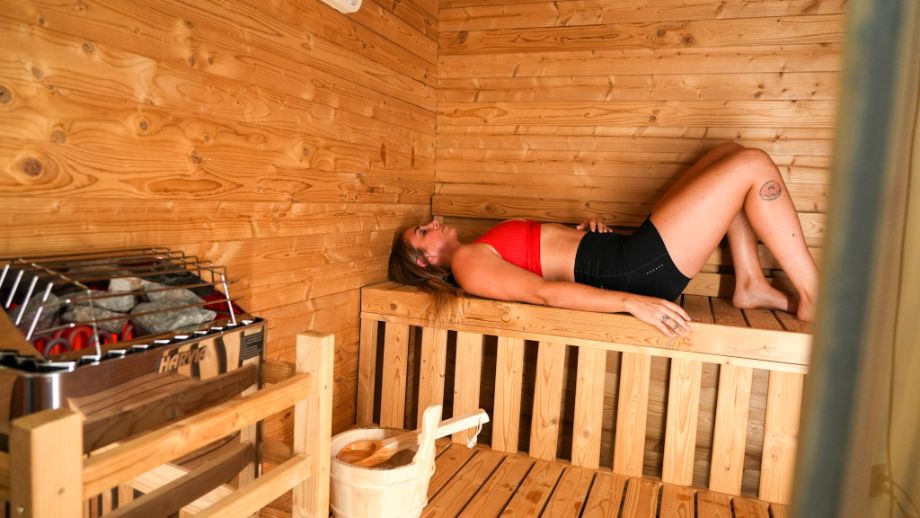Some folks can’t picture a back day workout without free weight staples like the bent-over row, reverse dumbbell fly, and deadlift, but all you really need is one machine to target all the major back muscles. We’re talking, of course, about the lat pulldown machine.
The classic lat pulldown exercise is excellent for building pulling strength and targeting your upper body muscles. Plus, there are loads of variations to alter the stimulus and get more bang for your buck from this versatile machine and movement pattern.
Caine Wilkes, OLY, USAW-L1, and GGR senior staff writer, provides eight of the best lat pulldown variations, how to do them with proper form, why you should do them, and more!
8 Best Lat Pulldown Variations
The lat pulldown exercise is already among the most effective for building back strength and muscle, but these variations prove you can do so much more with one humble machine.
Close-Grip Lat Pulldown
Why do it: “The close-grip lat pulldown puts your wrists more in line with your shoulders, helping you get more leverage and, as a result, lift more weight,” says Caine Wilkes, OLY, USAW-L1. “So, it’s great for strength gains, but also tends to be more comfortable for beginners versus regular or wide grips.”
How to do it:
- Adjust the lat pulldown machine to your specifications.
- Grip the attachment using a narrow overhand grip and sit.
- Pull the attachment toward your upper chest, nearly touching.
- Squeeze your lats at the bottom of the movement, then slowly return to the starting position.
- Repeat for reps.
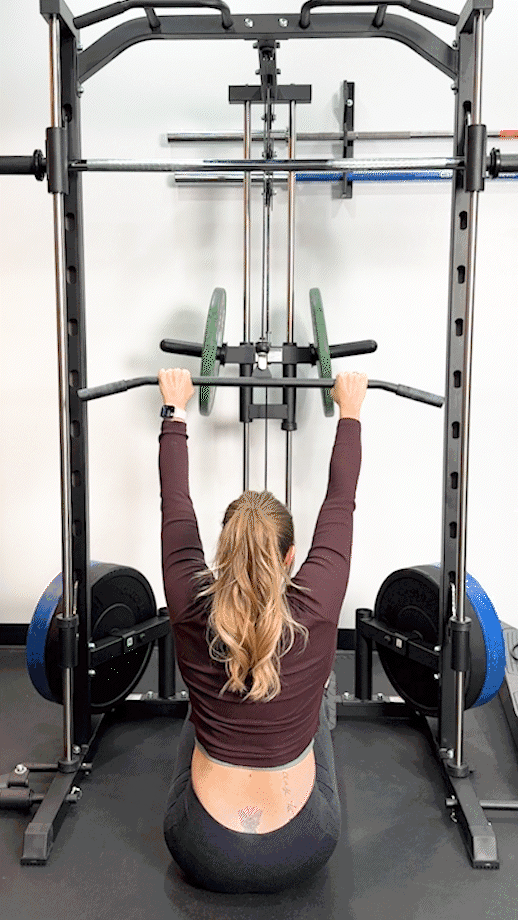
Wide-Grip Lat Pulldown
Why do it: According to the Journal of Strength and Conditioning Research1, you’ll get more muscle activation of the latissimus dorsi and infraspinatus using a wide grip for your pulldowns. Conversely, the positioning decreases the amount of leverage you can get, meaning you likely won’t be able to lift as much weight as you can while using other grips.
How to do it:
- Adjust the lat pulldown machine to your specifications.
- Grip the attachment slightly outside shoulder-width and sit.
- Pull the attachment toward your upper chest, nearly touching.
- Squeeze your lats, then slowly return to the starting position.
- Repeat for reps.
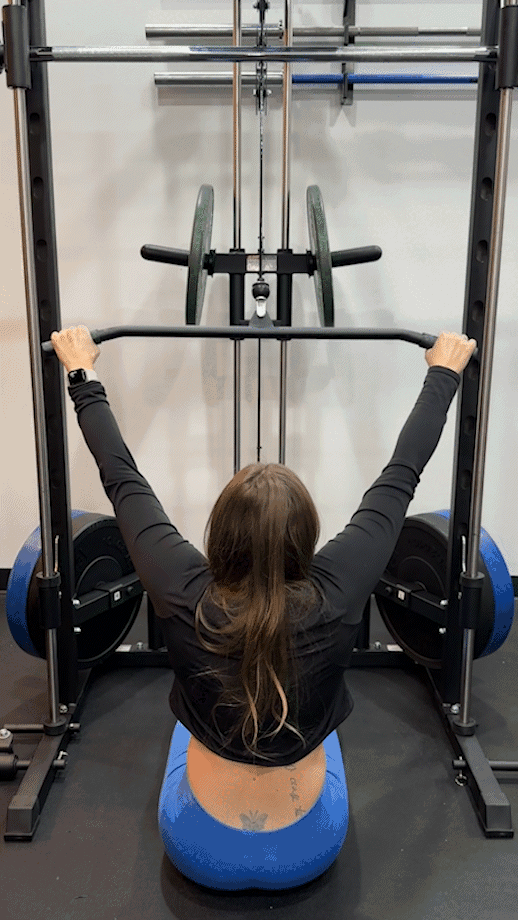
Straight-Arm Lat Pulldown
Why do it: Straight-arm pulldowns take the mid-back and biceps brachii out of the equation, making it one of the best isolation exercises for the latissimus dorsi.
How to do it:
- Attach a straight-bar attachment to a lat pulldown machine or cable machine.
- Grab the attachment using an overhand grip (palms facing the floor) and step back.
- With straight arms, push the bar down in front of you using your lat muscles.
- Continue until the bar comes to mid-thigh level.
- Squeeze the contraction, then slowly return to the starting position.
- Repeat for reps.
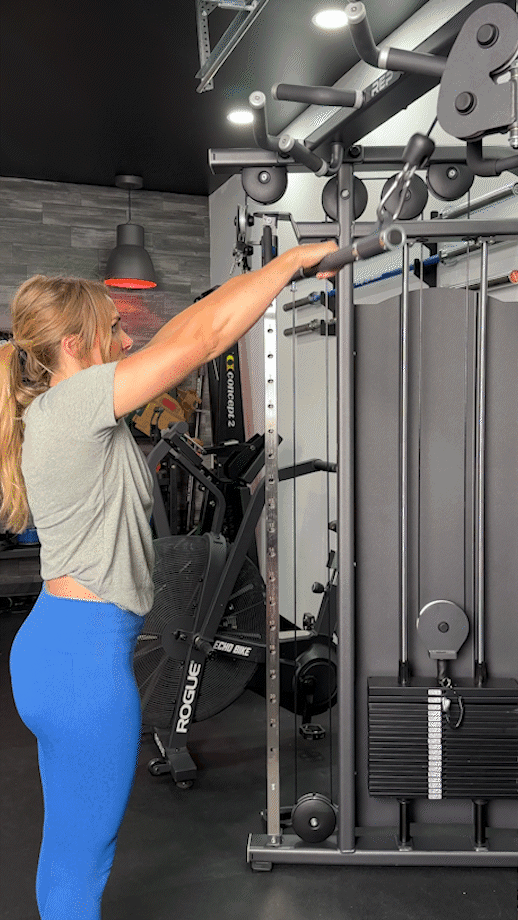
Single-Arm Lat Pulldown
Why do it: “Bilateral movements are great for maxing out the amount of weight you’re moving, but unilateral exercises are important, too,” says Caine. “They take away the ability to ‘cheat’ and let the dominant side do all the work, helping correct muscle imbalances and strength deficits.”
How to do it:
- Attach a single D-handle to the lat pulldown machine or cable machine.
- Adjust the machine to your specifications, grip the handle with a neutral grip, and sit.
- Pull the handle down towards the upper chest until your elbow reaches full flexion.
- Squeeze the contraction, then slowly return to the starting position.
- Repeat as needed, then switch sides and repeat the set.
RELATED: Best Cable Machine for Your Home Gym
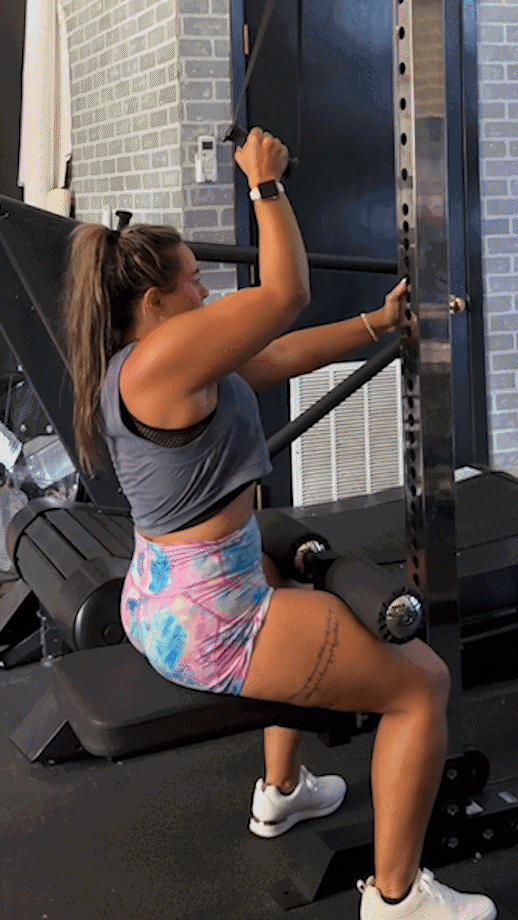
Behind-the-Neck Lat Pulldown
Why do it: The behind-the-neck pulldown variation is tricky because it requires incredible flexibility from the subscapularis, lats, teres major, and anterior deltoids. Specialized athletes like Olympic weightlifters will find it helps enhance their overhead strength, which translates nicely to the snatch and jerk exercises.
How to do it:
- Adjust the machine to your specifications.
- Get a wide grip on the handle, sit, and lean forward slightly.
- Slowly pull the bar down behind your head while maintaining an upright torso.
- Squeeze, then return to the starting position with control.
- Repeat for reps.
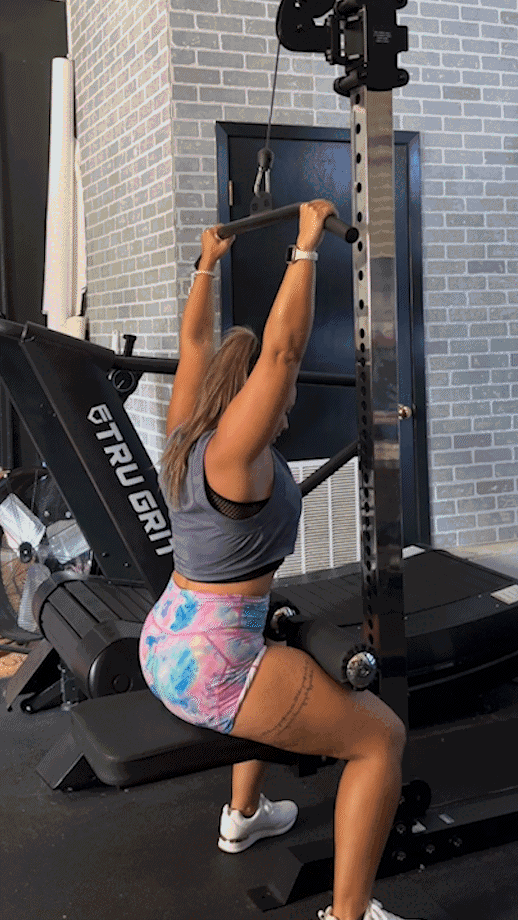
Reverse-Grip Lat Pulldown
Why do it: Using a supinated grip rather than the classic pronated one trades muscle activation in the upper back for more emphasis on the lower lats and biceps. It also allows for a more full range of motion, meaning greater time under tension and ultimately more work per rep.
How to do it:
- Adjust the lat pulldown machine to your specifications.
- Grip the attachment using an underhand grip and sit.
- Pull the attachment toward your upper chest, nearly touching.
- Squeeze your lats, then slowly return to the starting position.
- Repeat for reps.
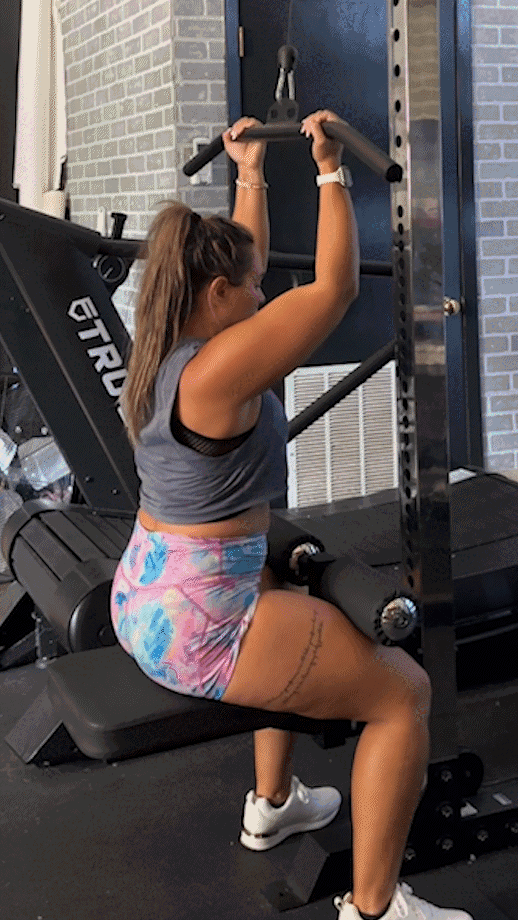
Resistance Band Lat Pulldown
Why do it: According to SAGE Open Medicine2, “elastic resistance training is able to promote similar strength gains to conventional resistance training.” Plus, using one of the best resistance bands is cost conscious for home gym owners who don’t have the budget or floor space for an actual lat pulldown machine.
How to do it:
- Secure a resistance band somewhere high, like a pull-up bar or closed door.
- Grip the ends of your resistance band with a neutral grip.
- Step away from the anchor point or kneel to create tension on the band.
- Perform a neutral grip lat pulldown using the band.
- Squeeze your lats at the bottom of the movement.
- Slowly return to the starting position.
- Repeat for reps.
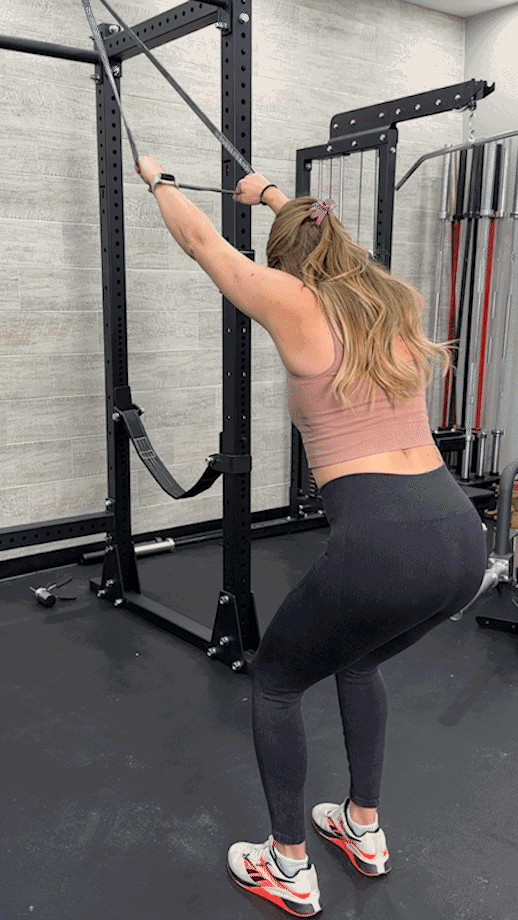
Pull-Up
Why do it: “To be fair, the pull-up isn’t a variation of the lat pulldown so much as it’s a progression of it,” says Caine. “Pull-ups work the same muscle groups as pulldowns using your bodyweight as resistance, making them a functional and fundamental strength movement.”
How to do it:
- Grip a pull-up bar using an overhand grip and enter a dead hang position.
- Slightly arch your back by retracting your shoulder blades and bringing your chest up.
- Use your lats and triceps to pull your body toward the bar.
- Continue until your chin passes over the bar.
- Squeeze the contraction, then return to the bottom with control.
- Repeat for reps.
RELATED: Lat Pulldown Vs Pull-Up
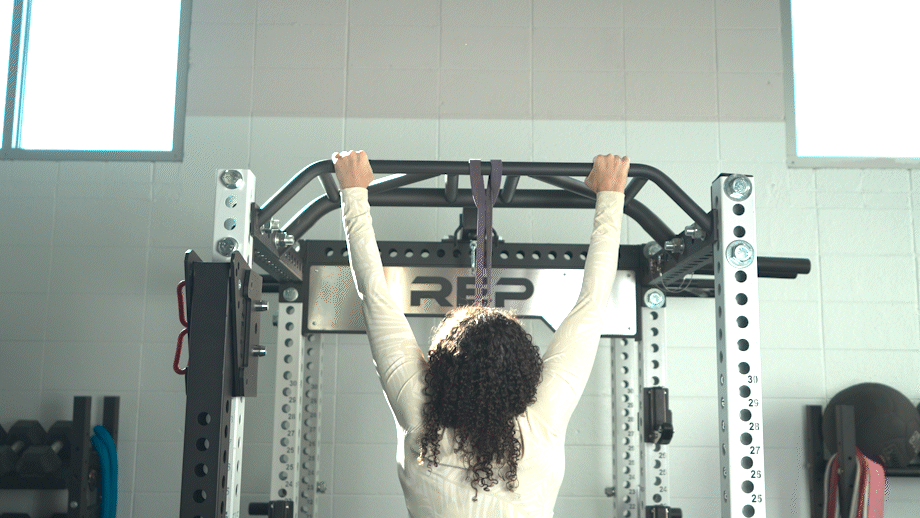
Muscles Worked By the Lat Pulldown
The lat pulldown is one of the best back exercises because it provides activation to most upper-body muscle groups. According to the National Academy for Sports Medicine3, those muscles include:
- Agonists: Latissimus dorsi, teres major
- Synergists: Posterior deltoids, trapezius, rhomboids, levator scapulae, biceps brachii, brachialis, brachioradialis
- Stabilizers: Triceps brachii, rotator cuff
Using different grips during the lat pulldown exercise changes the region that receives the most activation. For example, the overhand grip variation mostly hits the upper lats, whereas the reverse grip shifts the emphasis to your lower lats and the biceps.
For well-rounded growth, consider rotating which variations you’re using regularly.
How to Program Lat Pulldowns
Lat pulldowns and pulldown variations fit right into your existing back workout routine, whether you prefer penciling in a dedicated day for just the back muscles, combining synergistic pairs like the back and biceps, or hitting the upper body during a full-body workout.
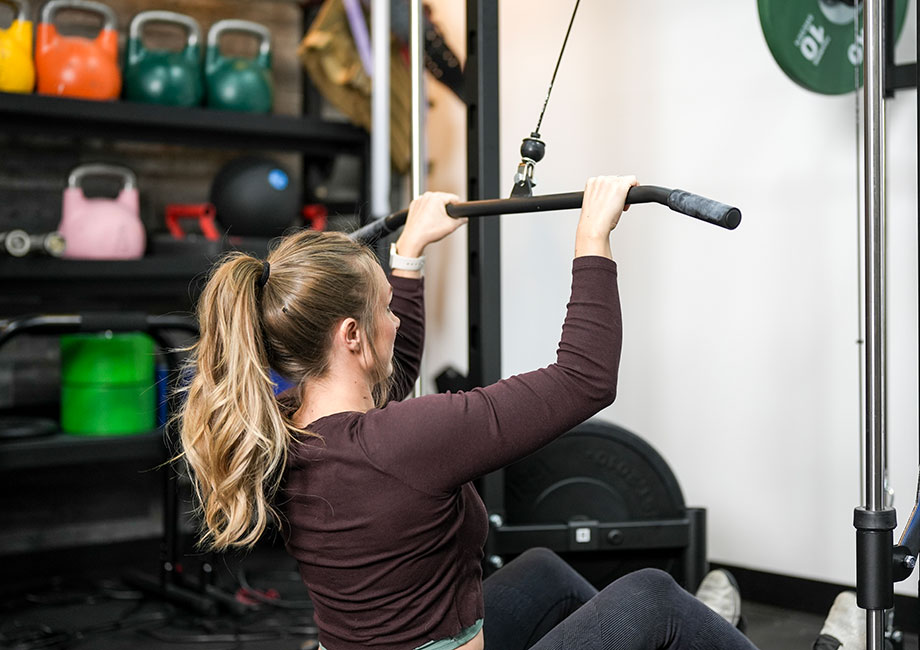
The rep scheme you’re going to employ will depend entirely on your personal fitness goals. According to Sports (Basel)4, loading recommendations and rep schemes are as follows:
- To gain strength: 2 to 6 sets, 1 to 5 reps, 80% to 100% your one-rep max
- To build muscle: 3 to 6 sets, 8 to 12 reps, 60% to 75% your one-rep max
- To enhance endurance: 2 to 3 reps, 15+ reps, below 60% your one-rep max
“Following your sets of lat pulldowns with lat pulldown variations and exercises that hit the same muscles, like chin-ups, seated rows, and high pulls with a barbell, works well,” says Caine Wilkes, OLY, USAW-L1. “It’s never a bad idea to perform pulldown variations as part of a superset with pushing exercises for a push-pull workout.”
For a tailor-made workout routine, consider working with a certified personal trainer, strength coach, or other qualified fitness professional.
Lat Pulldown Variations: FAQs
Which variation of lat pulldown is best?
The best lat pulldown variation all depends on your personal goals.
For example, close-grip pulldowns and reverse grip pulldowns are great for overall strength gains and increased activation of the lower lats, while standard lat pulldowns and wide-grip pulldowns are great for hypertrophy in the upper back and lats and building a wider back.
RELATED: Back Muscles Anatomy
Is reverse grip better for lat pulldowns?
“The reverse grip pulldown is better than the standard pulldown for certain things, but it’s not inherently or universally better,” says GGR senior staff writer Caine Wilkes, OLY, USAW-L1. “For example, reverse grip pulldowns are a great go-to movement for building the lower lats and biceps, but you’d be better off with standard pulldowns for upper-back activation or if you’re planning to progress to pull-ups soon.”
Should you lean forward or back when doing lat pulldowns?
The American Council on Exercise5 recommends the lifter lean back when performing pulldowns. Don’t overdo it though; ACE states that your body should be at a 30 degree angle or less.
How can I do a lat pulldown at home?
There are many ways to do lat pulldowns at home. You could purchase an actual lat pulldown machine, pick up a set of resistance bands and do resistance band lat pulldowns, or check out Coop’s guide for a DIY lat pulldown that you can easily put together in your own home gym!
References
1. Andersen V, Fimland MS, Wiik E, Skoglund A, Saeterbakken AH. Effects of grip width on muscle strength and activation in the lat pull-down. J Strength Cond Res. 2014;28(4):1135-1142. doi:10.1097/JSC.0000000000000232
2. Lopes JSS, Machado AF, Micheletti JK, de Almeida AC, Cavina AP, Pastre CM. Effects of training with elastic resistance versus conventional resistance on muscular strength: A systematic review and meta-analysis [published correction appears in SAGE Open Med. 2020 Sep 9;8:2050312120961220]. SAGE Open Med. 2019;7:2050312119831116. Published 2019 Feb 19. doi:10.1177/2050312119831116
3. Sutton B. The Biomechanics of the Lat Pulldown: Muscles Worked, Grips, & Form. NASM. Accessed March 6, 2024. https://blog.nasm.org/biomechanics-of-the-lat-pulldown.
4. Schoenfeld BJ, Grgic J, Van Every DW, Plotkin DL. Loading Recommendations for Muscle Strength, Hypertrophy, and Local Endurance: A Re-Examination of the Repetition Continuum. Sports (Basel). 2021;9(2):32. Published 2021 Feb 22. doi:10.3390/sports9020032
5. Exercise Library: Seated Lat Pulldown. ACE. Accessed March 6, 2024. https://www.acefitness.org/resources/everyone/exercise-library/158/seated-lat-pulldown/.


